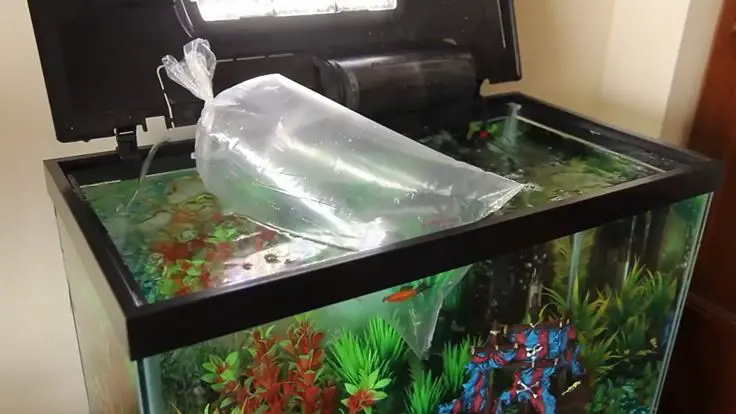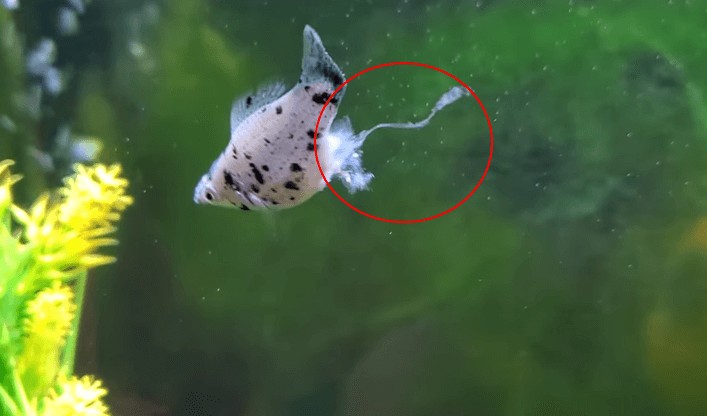Have you ever been told that it is essential to let your aquarium water sit before putting new fish into it? Do you want to know why and how long to wait?

Well, this article has all the answers for you.
As a new aquarium owner, you may be excited to fill your tank with fish, but 3 specific steps must be taken to ensure your water is safe for them. All 3 steps are essential, and none should be overlooked or disregarded.
These steps take about 4-6 weeks to complete, and they include:
1. Cycle the aquarium
2. Test the water to ensure the aquarium has been adequately cycled
3. Acclimatize the new fish to the tank’s water
The above tasks can only seem difficult if you are unaware of the process to follow in order to complete them. Don’t be anxious, we are here to help.
1/ Tank Cycling Quick Guide
The process of converting tap water in a tank into a healthy aquatic environment is called ‘cycling’. Cycling is the process of allowing beneficial bacteria to develop in the tank environment so the water is healthy for fish.We want to help you understand why to do this and how long the procedure lasts.
The importance of cycling your tank
Ammonia is toxic to fish and can even kill them if it reaches a high level of concentration. Ammonia is broken down in a fish tank by bacteria. These helpful microorganisms eat ammonia and convert it to something called nitrite. Nitrite is also toxic to fish. However, another helpful species of bacteria grow in fish tanks. This second species converts ammonia into nitrates. Nitrates are harmful to fish at high concentrations but can help fish and plants when controlled at lower levels.
Cycling a tank helps to prevent the buildup of ammonia in a tank. In simple terms, cycling allows the good bacteria colonies in your tank to consume the toxic waste and convert it to non-toxic waste making your aquarium safe for your fish. During the cycling process, the ammonia and nitrites will be converted into nitrates.
>> Additional content: Check out our guide featuring ‘How to Master the Nitrogen Cycle of Your Aquarium‘
How Long Does Cycling Take?
The answer can vary from tank to tank. Larger tanks will require more time than smaller tanks because of the amount of bacterial growth required. Heavily planted tanks can cycle in a shorter time because the plants will process some of the chemicals. In general, it can take up to 4-6 weeks to complete the cycling process.
Testing your water is the best way to know when the cycling process is finished. Before adding fish, your ammonia level should be zero. Likewise, the level of nitrites in the tank should be zero. Both ammonia and nitrite are poisonous to fish at very low levels.
Once your water tests negative for ammonia and nitrites, you are ready to add fish fish. Nitrate levels should also be very low. However, it is easy to control nitrate levels by changing the water.
2/ Test the water
What should we test for?
After your tank is done cycling, a test should be conducted to discover the nitrite, ammonia, and nitrate levels of your aquarium. In a successful cycled tank, the nitrite and ammonia concentration levels should be on zero, while the nitrate level should be below 40 ppm.
Why do we need to test?
Tesing is the only way to know your cycling was completed successfully, and your aquarium is now safe for fish. A test is needed to see if your nitrate, nitrite, and ammonia levels are at acceptable levels.
When do we need to test the water?
You can, of course, test your water every day! Most people don’t check their water quite this often, though. Two or three times a week during the cycling process should be plenty. During the testing, you want to see a few things happen:
- The first thing to see is an ammonia spike. A simple dip test with white paper strips will show you an increase in ammonia in your tank. Ammonia comes from the soil, decaying organic matter, or because you put it into the tank to start the cycling process.
- Next, you are looking for a nitrite spike. This will probably happen during the 2nd or 3rd week. If your nitrite level spikes after the 3rd week of cycling, then you are on the right track. After your nitrite has spiked, it will start converting to nitrate.
- The final step is the conversion of nitrite to nitrate. You can then test your water after 4-6 weeks to know if your ammonia and nitrite levels are low and if your tank is fully cycled. The ammonia and nitrite level should be zero and the level of nitrate should have risen.
If you see these three things, then you have done it correctly.
How can we test?
An aquarium test kit can be used to test your water during or after the cycling process. A test kit can be found in most pet shops and is created to measure a specific water parameter. This test kit includes an information key to show and help you understand the results.
>> Please take a moment and read my full article on best aquarium test kit.
3/ Acclimatize the new fish to your tank
A new fish, when placed in the tank, has low chances of survival if the aquarium owner failed to acclimatize the fish to the tank. Before placing a fish in a new tank, there are several steps you should take to ensure your new fish survives the change. Here is a simple list of the most important things to do:
- First of all, you can reduce the tank’s light to ensure it does not damage the eyes of your fish. Fish from stores may not be adjusted to bright lights. Likewise, fish kept in a bag or shipped in a box may need time to adjust their eyes after being in the dark.
- Secondly, ensure the pH level of the water in the plastic bag holding the fish is the same as your tank water. A little difference between the pH level of the water in the plastic bag and that of your tank can end up killing the fish. However, a pH level that is the same will give your fish a better chance of survival. So don’t add a fish directly into your tank, but leave the fish in the plastic bag and place the bag in your tank water to float.
- Roll down the edges of the plastic bag to let little amounts of water from the tank into the bag. You can also add cups of water from the tank into the bag. Doing this will allow the pH level of the water in the plastic bag to slowly change so that the fish will gradually adjust to the new pH level.
- Lastly, you must consider the temperature of your aquarium water. Different species of fish thrive in different water temperatures. You need to conduct adequate research to determine what water temperature the new fish requires. Putting the new fish in water too hot or too cold can be fatal.
>> Additional content: Check out our guide on fish tank water pH for beginners.
4/ FAQ
How long does tap water need to sit to dechlorinate?
Tap water requires not less than 24 hours to dechlorinate. In some cases, it can even take up to 5 days for the chlorine to evaporate from your water fully. How long your water needs to dechlorinate fully will depend on the level of concentration of the chlorine and the volume of your water.
Also, you can rely on ultraviolet light, aeration, proper water circulation and water conditioner products to dechlorinate your water at a faster rate.
How long can a fish survive in a bag?
A fish can survive in a bag filled with water for up to 7-9 hours. This time frame can be extended to 48 hours if oxygen is added to the bag. Most fish pet stores offer this option to customers to ensure the fish can survive for up to 48 hours in a bag.
Also, the amount of air in the plastic bag can determine the likelihood of survival of the fish. Excess air in the bag should be removed and replaced with oxygen.
How often should water be tested?
After your aquarium water has been fully cycled, you should test your water every day for a week to determine if the nitrate, nitrite, and ammonia levels are stable. Once you are convinced these levels are stable, you can reduce the testing to once a month to monitor any changes.






